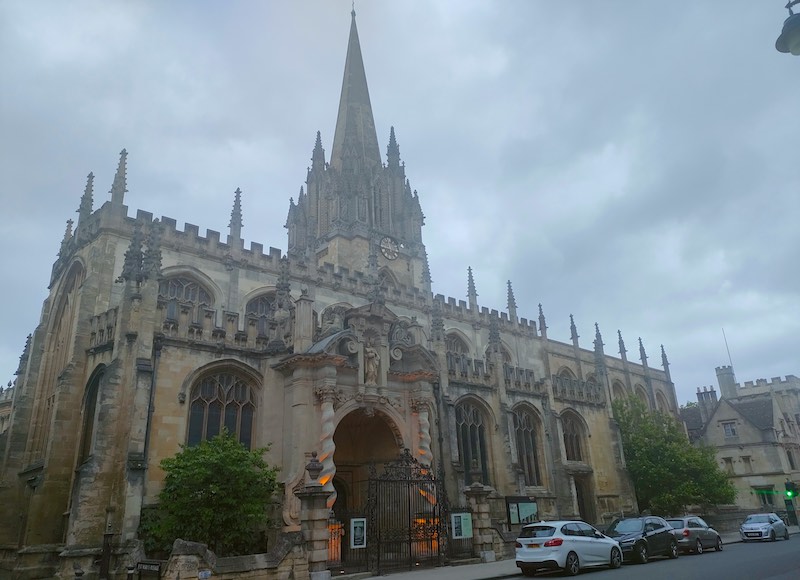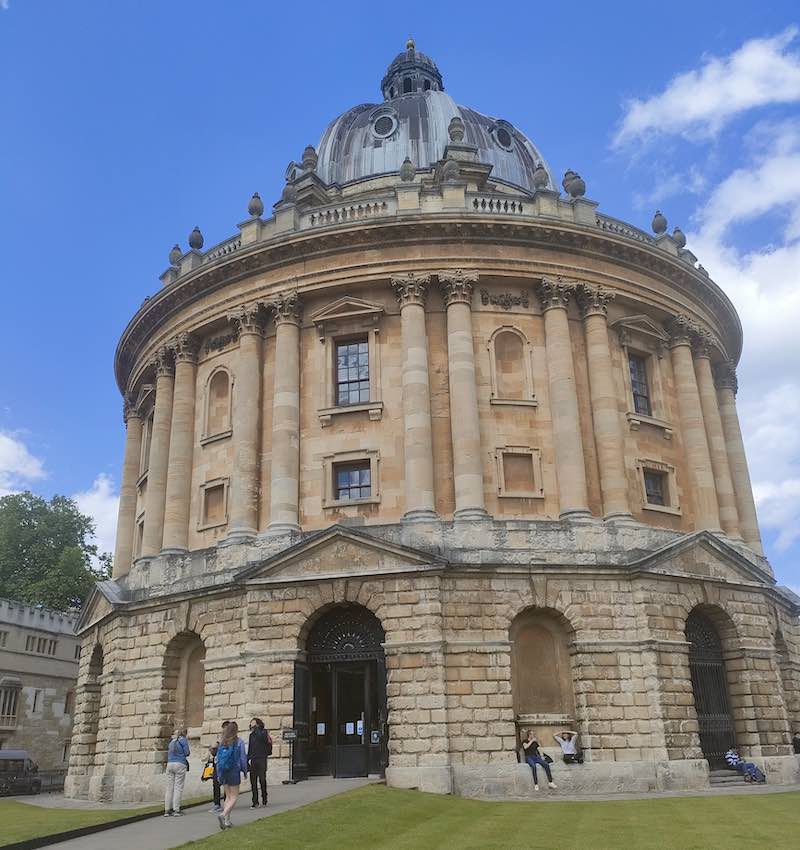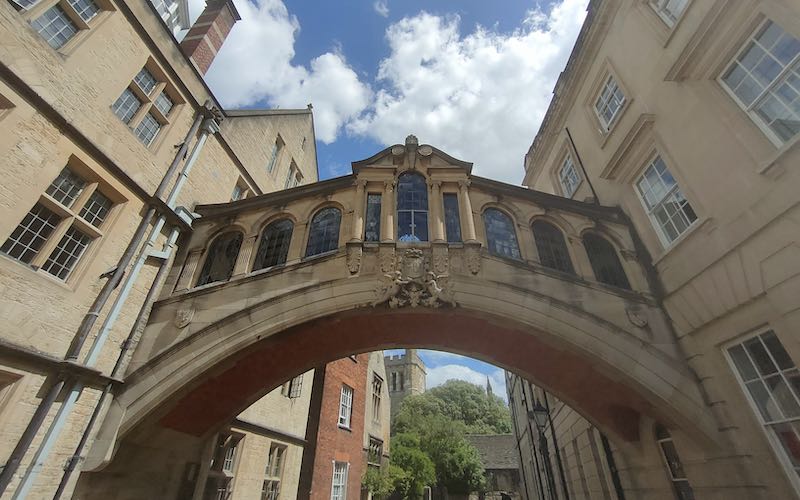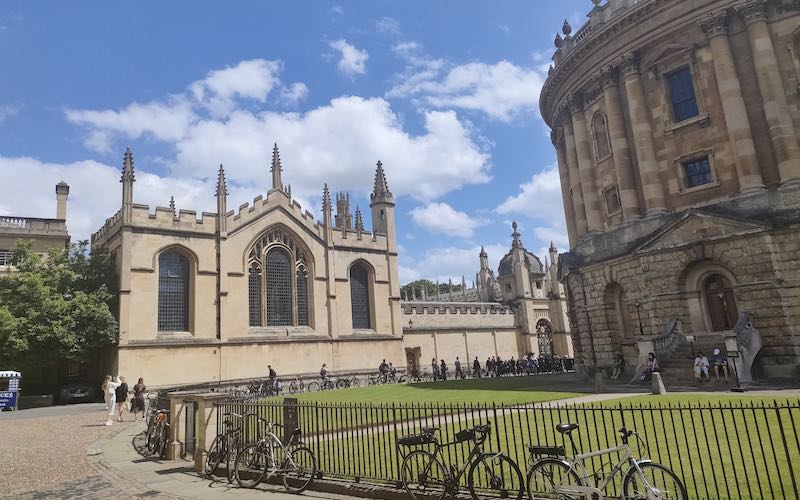Oxford is a city in the south of England with a rich history and cultural heritage. It is home to the University of Oxford, one of the oldest and most prestigious universities in the world, as well as a number of other notable landmarks and attractions. If you’re planning to spend just one day in Oxford, there are plenty of things to see and do to make the most of your time. Here are some suggestions for how to spend a day in this charming English city.
Both my mom and my sister live in Oxford and so I visit at least once a year. The great thing about Oxford is that it’s a very walkable city and extremely picturesque. Although accommodation can be pricey, there are also a lot of free things to do in Oxford and so it is possible to do Oxford on a budget.
This one day Oxford itinerary is jam packed, so adjust it according to your pace. You may want to cut out some of the smaller sites or see the museums from the outside only. Alternatively consider adding a second day in Oxford to be able to go into the main Museums including the Ashmolean and Pitt Rivers.
How to get to Oxford
The best way to get to Oxford is by train. There are direct trains to Oxford station from London and Birmingham New Street. You can also get the bus directly from Heathrow to Oxford bus station – book here with National Express if you are flying into London Heathrow. Oxford is a walkable city and is the best way to explore the city itself is on foot.
When to go to Oxford
If you want to experience the city during its warmest and sunniest weather, the summer months of June, July, and August are a good time to visit. Keep in mind that this is also the busiest time of year for tourists, so you may find that accommodations and attractions are more crowded and prices may be higher.
Spring (April and May) and fall (September and October) are also good times to visit Oxford. The weather is generally mild and there are fewer tourists, so you may be able to get a better deal on accommodations and tickets to attractions.
If you’re interested in experiencing Oxford during the winter holiday season, the city is beautifully decorated and there are a number of festive events and activities to enjoy. Just be prepared for cooler temperatures and possibly some rain or snow.
No matter when you visit, it’s a good idea to check the weather forecast and pack accordingly. Oxford can be quite rainy at times, so it’s always a good idea to bring a raincoat or umbrella.
Where to Stay in Oxford
Oxford has a couple of good options for hostels that are near the station – the best is Central Backpackers.
How to Spend One Day in Oxford
If you have one day in Oxford you can actually see quite a lot. I would recommend staying over one or two nights though, rather than doing Oxford as a day trip from London. If you arrive by train that morning then walk down Park End Street and New Road until you get to Oxford High Street and start your journey from there. If you have the time, stop off for a breakfast at George Street Social. It’s my favourite breakfast/brunch place in Oxford and their Eggs Benedict is phenomenal!
How to spend one day in Oxford – Summary
In the morning you will be able to walk to see the following sites:
- High Street Oxford
- University Church Oxford
- All Souls College
- Radcliff Camera
- Bodleian Library
- Bridge of Sighs
- Sheldonian Theatre
- Martyrs Memorial
- Ashmolean Museum
Lunch Stop – I recommend the Turf Tavern
In the afternoon you will visit:
- Oxford Castle
- Cornmarket Street
- Carafe Tower
- Tom Gate
- Christ Church and Christ Church Meadows
- Magdelene College
- Botanical Gardens
In the evening, head to Jericho to get a feel for the cosmopolitan area and have a meal or a drink in one of the pubs. I recommend the The Old Bookbinders Ale House.
One day in Oxford – AM
Start on Oxford high street where there is a range of independent shop including shoe shops, clothes and souvenirs. Head to your first location – the beautiful University Church Oxford which is open to the public and free to get in.
University Church Oxford
The University Church of St Mary the Virgin is a historic church located in the heart of Oxford, England. It is one of the city’s most famous landmarks and has a long and rich history dating back to the 12th century.
The church is located on the High Street, which is the main street in Oxford and home to many of the city’s most famous landmarks. The church is open to the public and visitors are welcome to explore the interior, which is filled with beautiful stained glass windows, intricate stone carvings, and other architectural features.

In addition to its religious functions, the University Church of St Mary the Virgin is also an important academic and cultural center. It hosts a range of events and activities throughout the year, including concerts, lectures, and exhibitions.
The church is also home to the University of Oxford’s official carillon, which is a set of bells that are played manually or mechanically. The carillon is played regularly, and the church is home to a number of carillon recitals throughout the year. Be mindful of the timing of services particularly on a Sunday.
Radcliffe Camera
The Radcliffe Camera is a beautiful, circular library building on Radcliffe square. It is part of the University of Oxford’s Bodleian Library, which is one of the oldest and most prestigious libraries in the world. It was built in the 18th century and was designed by the architect James Gibbs. It is named after John Radcliffe, a prominent physician and philanthropist who donated money towards its construction.

The library is made up of a single, circular reading room with a domed roof and is surrounded by a colonnade. It is an iconic building in Oxford and is a popular tourist destination, known for its beautiful architecture and history. The building is open to the public, and visitors are welcome to explore the interior of the library – usually as part of a pre-booked tour. It is also used as a venue for events, such as lectures and exhibitions.
Bodleian Library Divinity School
The Bodleian Library was founded in the 14th century and has grown over the centuries to become one of the largest libraries in Europe. It is home to an extensive collection of books, manuscripts, and other materials, including many rare and valuable items.
Bridge of Sighs
The Bridge of Sighs is a famous bridge that connects two parts of Hertford College, which is part of the University of Oxford. The bridge was designed by the architect Thomas Graham Jackson and was completed in 1914. It is made of stone and is decorated with intricate carvings and sculptures. The bridge gets its name from the similarity of its design to the Bridge of Sighs in Venice, Italy. Unfortunately you cannot cross the bridge without being a student at the University Colleges.

Sheldonian Theatre
The Sheldonian Theatre is part of the University of Oxford and is used for a variety of purposes, including concerts, lectures, and ceremonial occasions. The Sheldonian Theatre was designed by the architect Sir Christopher Wren and was completed in 1669. It is an iconic building in Oxford, known for its beautiful architecture and historic significance. The theatre is made up of a large, oval-shaped auditorium with a central stage and seating for up to 1,000 people. It is decorated with intricate carvings, sculptures, and paintings, and is an important example of Baroque architecture.
Martyrs Memorial
The Martyrs’ Memorial is a historic monument on St Giles’ street. It is a memorial to three Protestant bishops who were martyred during the reign of Queen Mary I of England, also known as “Bloody Mary.” The three Martyrs were named Hugh Latimer, Nicholas Ridley, and Thomas Cranmer and they were martyred for their Protestant beliefs.
The itself monument was erected in the 19th century. It is made of stone and consists of a tall, ornate cross with four smaller crosses at the base. The memorial is surrounded by a small garden and is a popular tourist destination. This is a great place to learn about the history of Oxford and the role it played in the Protestant Reformation.
Ashmolean Museum
The Ashmolean Museum is a museum of art and archaeology located on Beaumont Street. It was founded in 1683 and is the oldest museum in the UK. The museum is part of the University of Oxford and is named after Elias Ashmole, a 17th-century collector and founder of the museum.
It has a wide-ranging collection that includes art, archaeology, and cultural artifacts from around the world. It is home to some of the most important artworks and artifacts in the world, including the Elgin Marbles, which are a series of classical Greek sculptures that were brought to England from the Parthenon in Athens in the early 19th century.
The museum also has a large collection of Egyptian artifacts, including mummies and grave goods, as well as a collection of Greek and Roman art and artifacts. In addition to its permanent collections, the Ashmolean Museum also hosts temporary exhibitions and events.
Visitors to the Ashmolean Museum can explore the museum’s galleries and exhibits, attend lectures and events, and participate in educational programs and workshops. The permanent exhibits are free to visit and you can pay extra for the temporary exhibits. You would need to allow at least an hour to an hour and a half if you want to see the main exhibitions.
Lunch Stop – Turf Tavern
The Turf Tavern is a historic pub that you will find tucked away down Bath Place. The Tavern dates back to the 13th century and has a long history as a popular gathering place for locals and visitors alike. The Turf Tavern is known for its cozy atmosphere, with low ceilings, wood beams, and a fireplace. It serves a range of beers and ales, as well as traditional pub food, such as fish and chips, sandwiches, and pub pies. The pub features on many of the Harry Potter tours because it used to be the place where the cast drank actual Butter Beer. Sadly, they no longer serve it!
How to Spend one day in Oxford – PM
In the afternoon there is plenty to see, including the Castle, Magdalene College and the Botanical Gardens.
Oxford Castle
Next, walk down Worcester Street and turn down New Road towards Oxford Castle. The original wooden motte and bailey castle was replaced in stone in the late 12th or early 13th century. Oxford castle was used as a prison right up to 1996. It was then turned into a museum and a hotel on site. If you want to go inside, it is by guided tour only and you will need to book in advance.
Cornmarket Street
Cornmarket Street is the main shopping street in Oxford. You will find eateries, independent shops and chain stores. At the top of Cornmarket street look for the Tudor houses – number 26–27 Cornmarket Street. They are now three shops – the last time I checked one was a Pret A Manger and another one a hat shop.
Carfax Tower
Carfax tower is located on Queen St at the end of Cornmarket street. The tower is all that is left of the 13th century St Martin’s Church, which used to be the official Church of the city of Oxford from 1122. The Church was demolished in 1860 because the building became unsafe, and later on they wanted to improve traffic flow on the busy junction, but the tower was preserved. It is possible to go up Carfax tower for a small fee of £3 (price in 2020). The winding staircase is very narrow, but the beautiful views of the city of Oxford and its spires is makes it worth the climb.
Tom Gate and Christ Church Cathedral
A visit to Oxford is not complete without a visit to Christ Church including Tom Tower and Christ Church Cathedral (one of the most famous Churches in Oxford)
Tom tower or Tom Gate is the gate to Christ Church, Oxford. It is a gothic style tower that was designed by Christopher Wren. The The 7 ton bell in the tower is known as ‘Great Tom’ and it chimes 101 times a night to signify the original scholars of Christ Church.
Christ Church is open to visitors through private tours which take about 30-60 minutes and cost £10. This includes the chapel which is also a Cathedral.

Magdelene College
Another essential college to visit in Oxford is Magdelene College. A tour of the college costs £13 and includes admission fee for all accessible areas of the College including the Longwall Library Quad. If you don’t want a guided tour and just want the admission ticket this costs £9.50. Or you can get a dual ticket for Magdelene College and the Botanical Gardens for £14.
Botanical Garden
On the opposite side of the River Cherwell to Magdelene College is the beautiful Botanical Garden. It’s home to over 5000 plant species. It costs £6.30 a ticket and there are also concessions available (free for carers of the disabled). here are 7 glasshouses containing different biomes including tropical and arid. There is also a section of carnivorous plants. Ideally spend at least an hour to an hour and a half. If you are pushed for time after all of the Oxford colleges then this might be one to skip – amend your schedule according to your preferences.
Evening – Jericho – The Old Bookbinders Ale House
If you still have energy after that jam-packed day in Oxford then head to Jericho which is the hip and trendy neighbourhood full of pastel coloured houses, local eateries and cocktail bars. There is also an art house cinema. Jericho is a great place to hang out for both students and locals. My top recommendation is dinner and drinks at the Old Bookbinders Ale House. It’s positioned on the canal and offers a selection of beers and French food options on the menu.
Further Reading on Oxford and London
If you enjoyed this blog on how to spend one day in Oxford then you might also like to read:
- Free things to do in Oxford
- Top 10 things to do in Oxford
- How to see London on a Budget
- Solo Female Travel London
- Churches in Oxford

